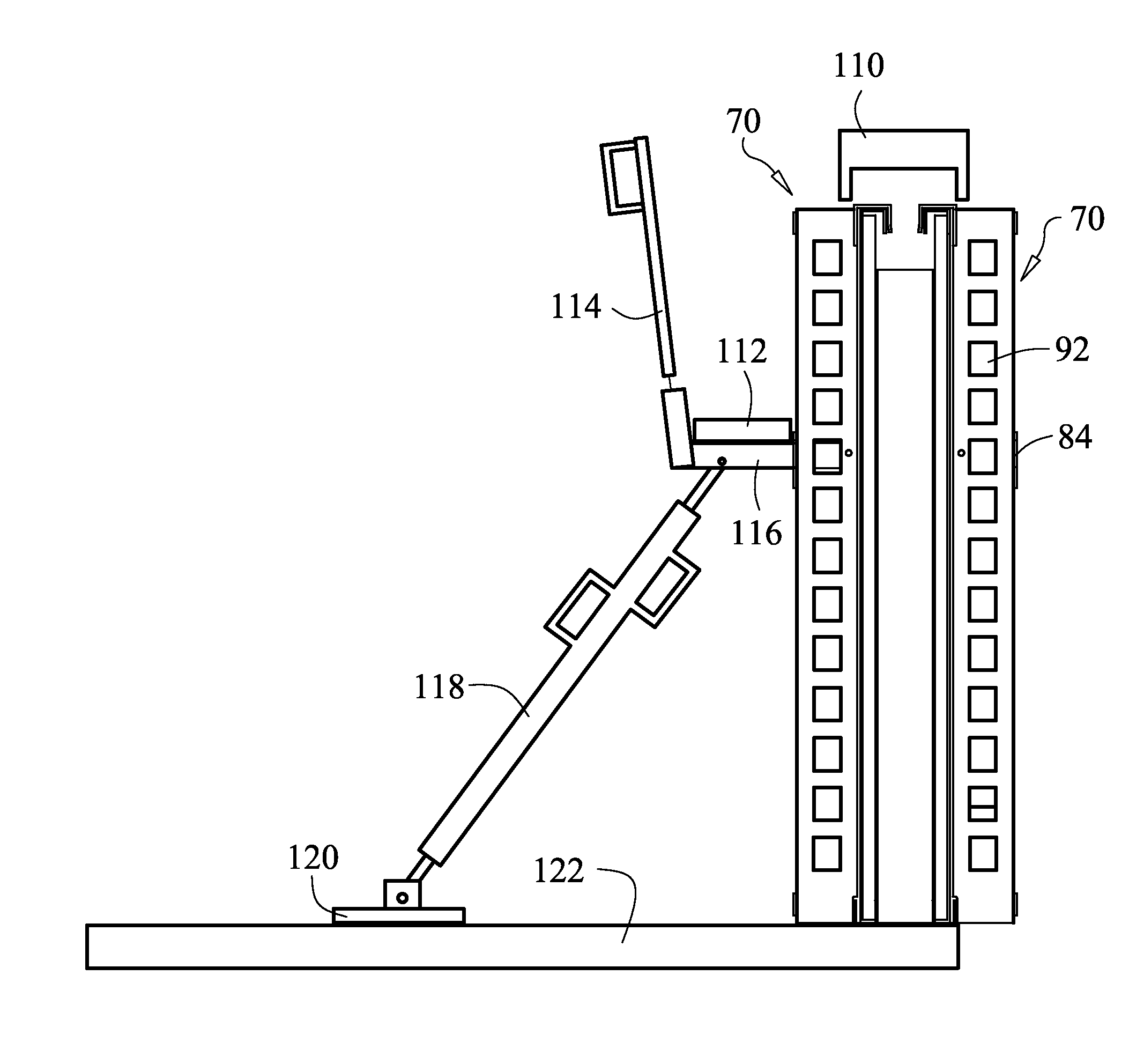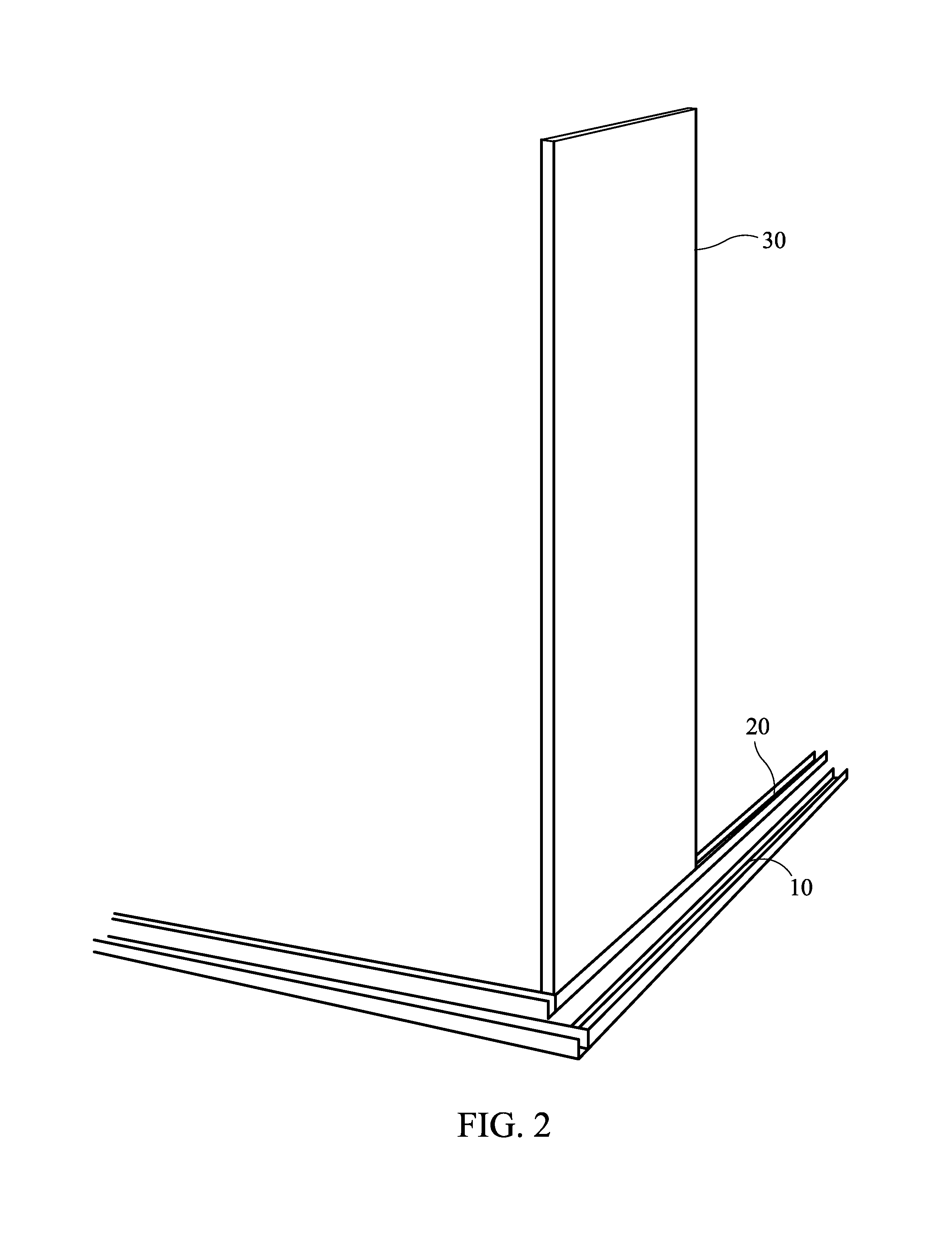Insulated concrete form method and system
a concrete and form method technology, applied in the field of freestanding residential construction, can solve the problems of increasing the difficulty and complexity of conduit installation, reducing the strength of the system, and using complicated bracing systems that are costly, cumbersome and time-consuming to assemble and disassemble,
- Summary
- Abstract
- Description
- Claims
- Application Information
AI Technical Summary
Problems solved by technology
Method used
Image
Examples
Embodiment Construction
[0033]Referring to FIG. 1 shows the pair of bottom U-shaped channels secured to a concrete floor. An exterior bottom U-shaped channel 10 allows the bottom edge of the exterior foam sheet to be secured therein. The interior bottom U-shaped channel 20 is secured to the concrete slab an appropriate distance to accommodate the design width of the wall. The width can vary from six (6) to twenty (20) inches. The U-shaped channels 10, 20 are fastened to floor slabs using pneumatic nailers.
[0034]FIG. 2 shows interior foam sheet 30 installed within interior bottom U-shaped channel 20. Once a foam sheet is placed in the bottom U-shaped channel, the top U-shaped channel 50 is placed on the top edge of foam sheet 40 as shown in FIG. 3. Foam sheets 30, 40 vary in size from four (4) feet wide to eight (8), ten (10), twelve (12) or twenty-four (24) feet in length and are made of polystyrene. The thickness of foam sheets 30, 40 vary from one (1), two (2) or four (4) inches and remain with the struc...
PUM
 Login to View More
Login to View More Abstract
Description
Claims
Application Information
 Login to View More
Login to View More - R&D
- Intellectual Property
- Life Sciences
- Materials
- Tech Scout
- Unparalleled Data Quality
- Higher Quality Content
- 60% Fewer Hallucinations
Browse by: Latest US Patents, China's latest patents, Technical Efficacy Thesaurus, Application Domain, Technology Topic, Popular Technical Reports.
© 2025 PatSnap. All rights reserved.Legal|Privacy policy|Modern Slavery Act Transparency Statement|Sitemap|About US| Contact US: help@patsnap.com



